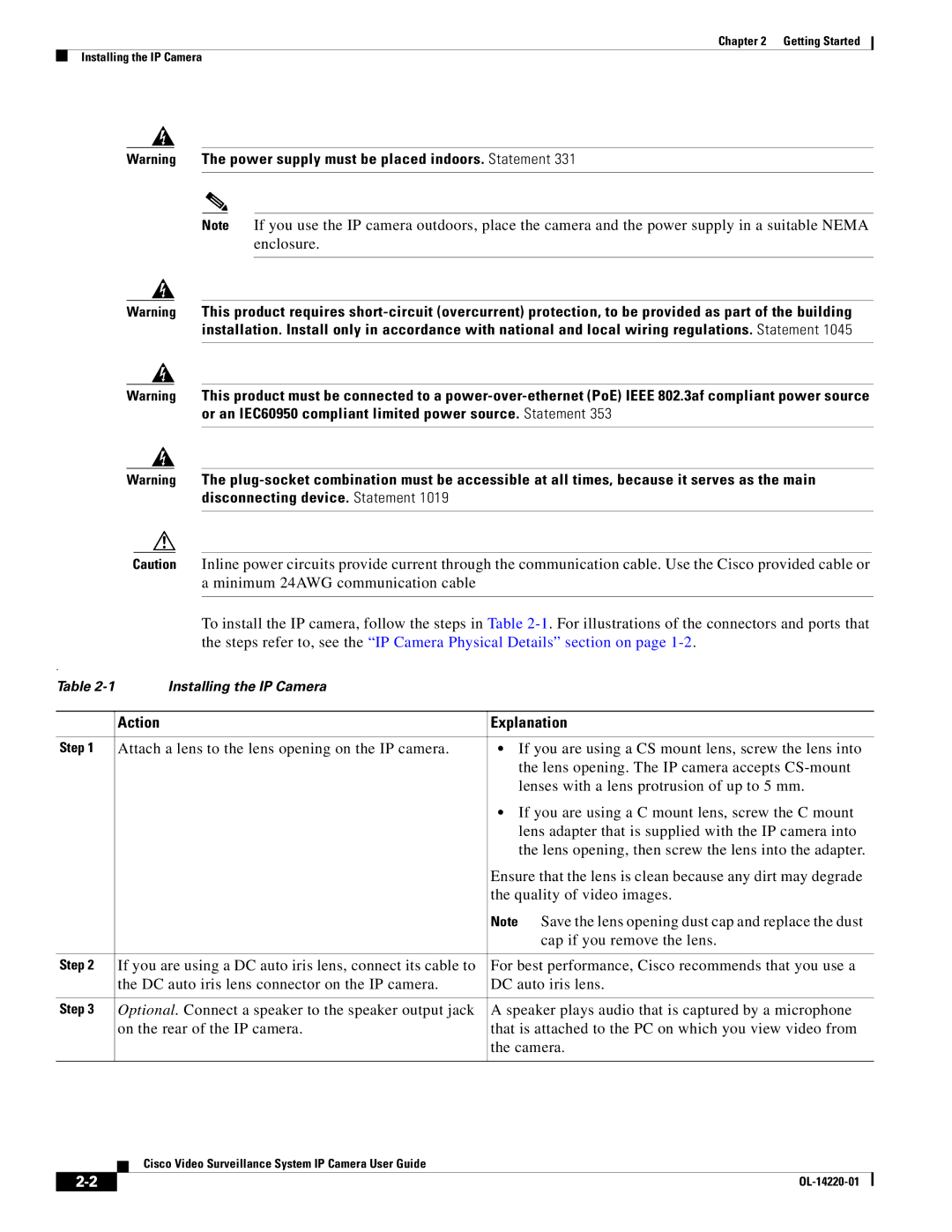
Chapter 2 Getting Started
Installing the IP Camera
Warning The power supply must be placed indoors. Statement 331
Note If you use the IP camera outdoors, place the camera and the power supply in a suitable NEMA enclosure.
Warning This product requires
Warning This product must be connected to a
Warning The
Caution Inline power circuits provide current through the communication cable. Use the Cisco provided cable or a minimum 24AWG communication cable
To install the IP camera, follow the steps in Table
. |
|
|
Table | Installing the IP Camera |
|
|
|
|
| Action | Explanation |
|
|
|
Step 1 | Attach a lens to the lens opening on the IP camera. | • If you are using a CS mount lens, screw the lens into |
|
| the lens opening. The IP camera accepts |
|
| lenses with a lens protrusion of up to 5 mm. |
|
| • If you are using a C mount lens, screw the C mount |
|
| lens adapter that is supplied with the IP camera into |
|
| the lens opening, then screw the lens into the adapter. |
|
| Ensure that the lens is clean because any dirt may degrade |
|
| the quality of video images. |
|
| Note Save the lens opening dust cap and replace the dust |
|
| cap if you remove the lens. |
|
|
|
Step 2 | If you are using a DC auto iris lens, connect its cable to | For best performance, Cisco recommends that you use a |
| the DC auto iris lens connector on the IP camera. | DC auto iris lens. |
|
|
|
Step 3 | Optional. Connect a speaker to the speaker output jack | A speaker plays audio that is captured by a microphone |
| on the rear of the IP camera. | that is attached to the PC on which you view video from |
|
| the camera. |
|
|
|
Cisco Video Surveillance System IP Camera User Guide
| ||
|
